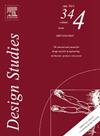On the multiplicity of artifacts: A typology including regulatory artifacts
IF 3.2
1区 工程技术
Q2 ENGINEERING, MANUFACTURING
引用次数: 0
Abstract
There are various studies on specific types of artifacts. Many of them have focused on “technical artifacts” and “cognitive artifacts”; and, more recently, other studies have examined “regulatory artifacts”. However, a general typology is still lacking. This article aims to build such a typological framework based on the identification of three macro-categories of artifacts – i.e. behaviour-supporting, behaviour-engaging, and behaviour-influencing – and on the identification of ten sub-categories within them: (i) descriptive artifacts; (ii) technical artifacts; (iii) cognitive artifacts; (iv) detecting artifacts; (v) ludic artifacts; (vi) artistic artifacts; (vii) status artifacts; (viii) deontic artifacts; (ix) constitutive artifacts; (x) steering artifacts. On the basis of this typology, five points are highlighted. First, the suggested typology illustrates how many human activities are mediated by some kind of artifact; we could say that artifacts have not only been the product of human intelligence but they have also been an active trigger of it. Second, the proposed typology sheds light on the fact that artifacts can perform not only traditionally, widely discussed technical or cognitive functions but also regulatory ones. Third, if regulatory artifacts are also considered, the maker's intentionality is confirmed as being of central importance in defining what artifacts are. Fourth, the proposed typology shows that the different types of artifacts produce their effects in different ways: in certain cases, their performance is for instance mainly based on causal mechanisms, whilst in other cases on mainly symbolic mechanisms. Fifth, the typology illuminates significant differences between humans and animals.
关于工件的多样性:包括规范性工件的类型学
对特定类型的人工制品有各种各样的研究。他们中的许多人专注于“技术工件”和“认知工件”;最近,其他研究也对“监管产物”进行了考察。然而,一个普遍的类型学仍然缺乏。本文旨在建立这样一个类型学框架,该框架基于对工件的三个宏观类别的识别-即行为支持,行为参与和行为影响-以及对其中十个子类别的识别:(i)描述性工件;(ii)技术制品;(iii)认知伪影;(四)检测伪影;(v)滑稽的文物;(六)艺术品;(vii)身份文物;(八)祭祀文物;(ix)本构伪影;(x)转向工件。在此类型学的基础上,强调了五个要点。首先,建议的类型学说明了有多少人类活动是由某种人工制品介导的;我们可以说,人工制品不仅是人类智慧的产物,而且也是人类智慧的积极触发因素。其次,提出的类型学揭示了这样一个事实,即人工制品不仅可以执行传统的、广泛讨论的技术或认知功能,还可以执行监管功能。第三,如果还考虑到监管人工制品,则确定制造者的意向性在定义人工制品时是至关重要的。第四,提出的类型学表明,不同类型的人工制品以不同的方式产生效果:在某些情况下,它们的表现主要基于因果机制,而在其他情况下主要基于符号机制。第五,类型学揭示了人类与动物之间的显著差异。
本文章由计算机程序翻译,如有差异,请以英文原文为准。
求助全文
约1分钟内获得全文
求助全文
来源期刊

Design Studies
工程技术-工程:制造
CiteScore
8.60
自引率
20.00%
发文量
41
审稿时长
40 days
期刊介绍:
Design Studies is a leading international academic journal focused on developing understanding of design processes. It studies design activity across all domains of application, including engineering and product design, architectural and urban design, computer artefacts and systems design. It therefore provides an interdisciplinary forum for the analysis, development and discussion of fundamental aspects of design activity, from cognition and methodology to values and philosophy.
Design Studies publishes work that is concerned with the process of designing, and is relevant to a broad audience of researchers, teachers and practitioners. We welcome original, scientific and scholarly research papers reporting studies concerned with the process of designing in all its many fields, or furthering the development and application of new knowledge relating to design process. Papers should be written to be intelligible and pertinent to a wide range of readership across different design domains. To be relevant for this journal, a paper has to offer something that gives new insight into or knowledge about the design process, or assists new development of the processes of designing.
 求助内容:
求助内容: 应助结果提醒方式:
应助结果提醒方式:


